Indonesia is a multi-ethnic homeland with different cultural traditions. Each ethnic group has its own unique and beautiful culture. Among them, it has to be mentioned that it has a fascinating music culture. Traditional Indonesian music contains strong rhythm and harmony, and is strongly influenced by European and Malay classical music.
You can also enjoy learning traditional Indonesian musical instruments without leaving home. Here, we recommend five traditional Indonesian musical instruments to take you to explore Indonesia's unique and wonderful music world.
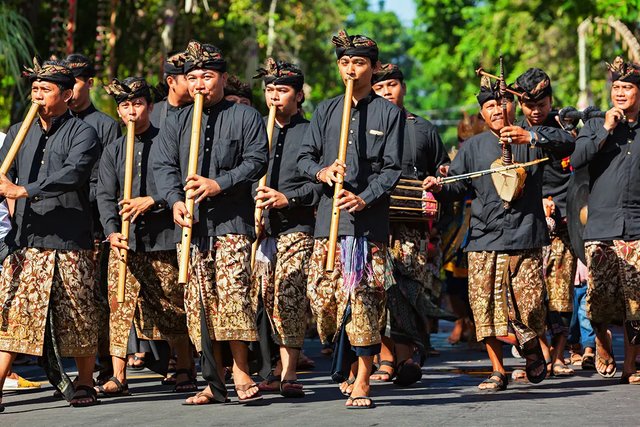
1. Suling Flute (Suling)
Suling (also known as Seruling) is a Southeast Asian bamboo flute used in various traditional music ensembles, including gamelan, six-stringed pipa and Malay dangdut. This kind of flute is made of a long, thin-walled bamboo tube called Tamiang, and the mouthpiece is surrounded by a thin rattan belt. This musical instrument originated in Malay culture and was carried forward in several Southeast Asian countries, including Indonesia.
The simple and crisp tunes or melodies played by Su Ling's flute are traditionally regarded as the “voice of happy learning”. There are many regions in Indonesia that use the flute as a traditional musical instrument and have different local names. In Java, Sunda and Bali, this instrument is often called Suring; in Minang, it is called saluang; in Toraja, it is called Lembang; in Halmahera, it is called bangsil; in West Nusa Tenggara, it is called Silu. silu).
One of the most popular Surin flute musicians in Indonesia is Gus Teja. You can listen to his soothing performances on YouTube and Spotify.
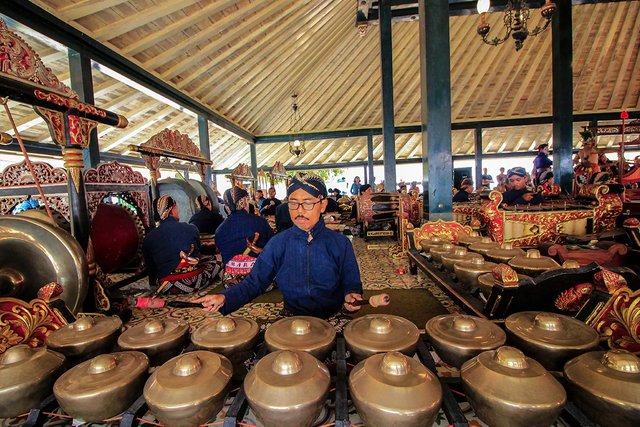
2. Gamelan (Gamelan)
Gamelan (Gamelan) is a set of traditional Javanese musical instruments, usually composed of gong (gong), Kenong (Kenong), xylophone (gambang), celempung (celempung) and many other percussion instruments. Gamelan can create soft tunes and create a peaceful atmosphere in harmony with Javanese society. Etymologically, "gamelan“ is derived from the Javanese term ”gamel“, which means beating/hitting, and the suffix ”an" makes it a noun. Therefore, the word ”gamelan“ can be interpreted as ”object of attack".
Related: pizza place bandung
Musical performances of Gamelan Ageng or all Gamelan musical instruments are usually accompanied by puppet performances, such as traditional shadow puppets (Wayang Kulit), Javanese opera (Wayang Orang), Ketoprak (Ketoprak), Javanese dance and many other performances. In addition to Java, Gamelan can also be found in other Indonesian cultures, such as Sunda (called “degung”), Bali (called “Gambelan”), Banjar (Banjar) and Lombok (Lombok).
Gamelan's voice is famous all over the world. Russia even has the Gamelan Dadali Moscow Orchestra (Gamelan Dadali Moscow), which is their own Gamelan music group, composed of Russian women trained by experts from the Indonesian Embassy in Moscow. You can listen to their performances on YouTube.
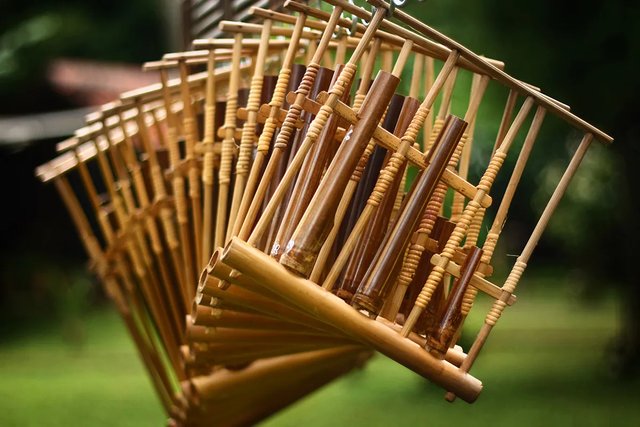
3. Angklung (Angklung)
Angklung (Angklung) is a traditional Indonesian bamboo musical instrument that often appears in West Java. It makes a sound by shaking the musical instrument to make the bamboo pipes collide with each other. Since November 2010, Anglong has been recognized by UNESCO as a masterpiece of human oral and intangible heritage. There are many types of angklung: angklung kanekes, angklung dogdog lojor, angklung gubrag and angklung padaeng.
Etymologically, "angklung“ comes from the Sunda word ”angka“, which means tone, and the word ”lung", which means broken. Therefore, "angklung“ means ”broken or incomplete tone". According to Jaap Kunst's book "Javanese Music", in addition to West Java, Angklung can also be found in South Sumatra and Kalimantan. The people of South Java, East Java and Central Java also use this musical instrument.
During the period of the Sunda Kingdom (12th to 16th centuries), Anglong was regarded as a worship ceremony for the goddess of fertility (Nyai Sri Pohaci). It is said that during the war, Anglong played a morale-boosting role.
There is a place called Saung Angklung Udjo in West Java, where people can witness live performances by Angklung musicians and learn how to make it.
Listen to their harmonious and wonderful music on YouTube. You can also enjoy Anglong music created and played by Tjoek Suparlan on Spotify.
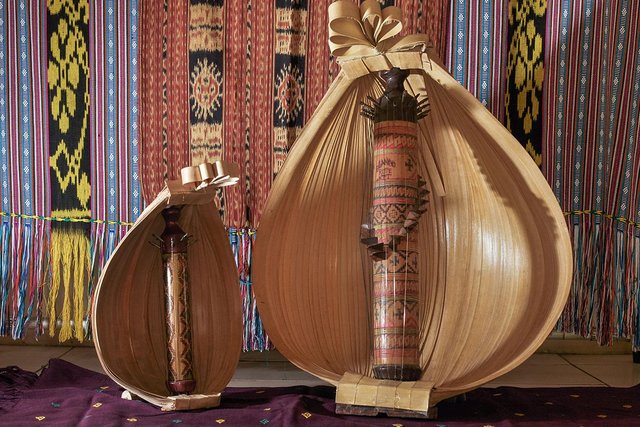
4. Sasando (Sasando)
Sasando (Sasando) is a traditional musical instrument of East Nusa Tenggara (NTT), made of bamboo and palm leaves. It was invented by two shepherds on the island of Rott in the 17th century, when they suddenly discovered that the containers used to fetch water could produce a soft tone. Originally, Sasando strings were made of palm leaf sticks, but later after the Portuguese came to Indonesia, they were replaced by steel strings commonly used in violins.
Sasando is played with both hands, but the two hands are played in opposite directions. The right hand plays chords, and the left hand plays melody and bass. A special set of techniques is needed to play Sasando. At first, Sasando had only 7-10 strings made of natural materials. In the 18th century, more strings were added, and the number increased from 24 to 28. Today, 32 to 48 strings are used in Sasando.
The philosophy behind Sasando's appearance and voice is unique and has a special meaning for a step-by-step life. The nine strings of Sasando's original shape are used to symbolize the life cycle of a human child in the womb (about nine months).
You can listen to the calm Sasando minor played by Natalino Mella on Youtube.
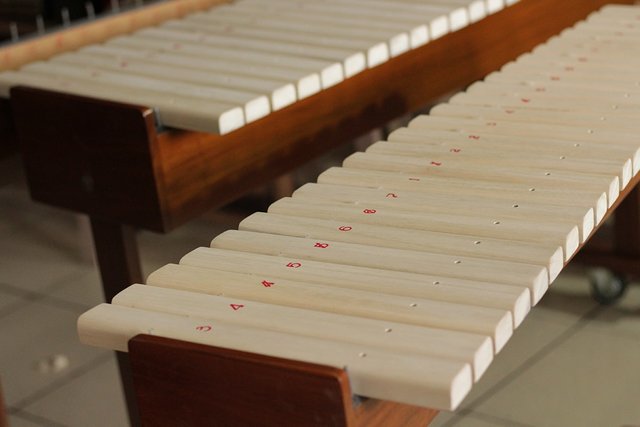
5. Row seat gong (Kulintang)
A row of seat gongs (Kulintang or Kolintang, also translated as Kulintang) consists of a row of small gongs placed horizontally, usually accompanied by a larger hanging gong and drum during the performance. Row seat gongs are part of the gongs and drums culture of Southeast Asia and have been played in the East Malay region (including Indonesia) for centuries.
In Indonesia, the row seat gong is a wooden percussion instrument that originated in the Minahasa region of North Sulawesi. It is usually made of local woods, such as Tru wood (chicken bone Changshan genus, Alstonia sp), cypress wood (Cempaka Wood, Elmerillia Ziampaca), cliff bean tree logs (Wenge Wood, Octomeles Sumatrana Miq) and water koji wood (Waru wood, Hibiscus tilaceus), as well as many other woods with strong fibers but very light.
The row-style seat gong is played by tapping it with a wooden stick wrapped in cloth, usually in traditional Minahasa rituals for musical performances, such as ancestor worship. However, under the influence of various religions and cultures, the row seat gong has changed its function and is used as an instrument to display music and art.
Watch the performance of Minahasa's KEYTUJI row seat gong band on Youtube, with the Eiffel Tower in France as the background, and enjoy the performance of Nyong&Noni in North Sulawesi.
Which traditional Indonesian musical instrument are you most interested in? Are you looking forward to enjoying these wonderful music? In the days when you don't leave home, take a good look at them! Let these unique Indonesian sounds and tunes bring you philosophy and strength.